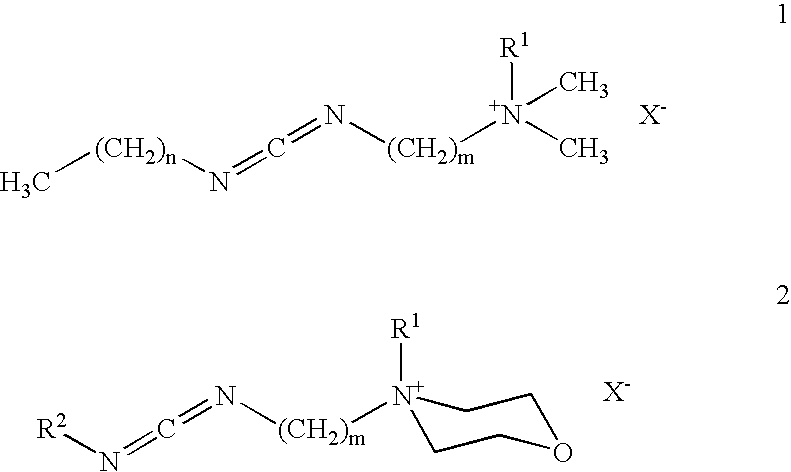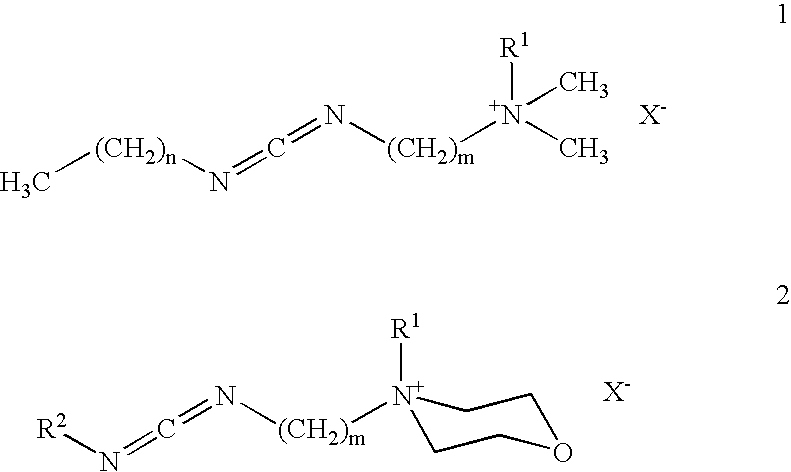Protein-based polymer tissue adhesives for medical use
a tissue adhesive and protein-based technology, applied in the field of medical adhesives, can solve the problems of slow curing of fibrin-based adhesives, limited internal application of fibrin-based adhesives, and inconvenient use of conventional tissue adhesives, and achieve the effect of preventing adhesion
- Summary
- Abstract
- Description
- Claims
- Application Information
AI Technical Summary
Benefits of technology
Problems solved by technology
Method used
Image
Examples
examples
[0170] The present invention is further defined in the following Examples. It should be understood that these Examples, while indicating preferred embodiments of the invention, are given by way of illustration only. From the above discussion and these Examples, one skilled in the art can ascertain the essential characteristics of this invention, and without departing from the spirit and scope thereof, can make various changes and modifications of the invention to adapt it to various uses and conditions.
[0171] The meaning of abbreviations used is as follows: “min” means minute(s), “h” means hour(s), “sec” means second(s), “mL” means milliliter(s), “L” means liter(s), “μL” means microliter(s), “cm” means centimeter(s), “mm” means millimeter(s), “μm” means micrometer(s), “mol” means mole(s), “mmol” means millimole(s), “g” means gram(s), “mg” means milligram(s), “MW” means molecular weight, “MW” means weight-average molecular weight, “MV” means viscosity-average molecular weight, “M” m...
examples 1-9
Lap Shear Strength
[0190] The purpose of these Examples was to demonstrate the beneficial effect of auxiliary polyamine or polycarboxylate on the lap shear strength of various protein-based adhesives when applied to collagen film.
[0191] A total volume of 50 μL of adhesive components, 40 μL of protein solution (with auxiliary polyamine or polycarboxylate) and 10 μL of EDC solution, were delivered by micropipettor and spread over a 1-cm2 area of contact between two 1 cm-wide strips of damp collagen film (from washed sausage casing, obtained from The Sausage Source, Hillsboro, N.H.). The strip ends were rubbed together to mix the components and then cured under a 25 g / cm2 weight for 30 min. A cloth loop was attached to one end of the assembly and lap shear determined by lifting weights of increasing mass, typically 100, 200 or 250, 350 or 375, 500, 650, 800 and 1000 g. To lift 500 and 1000-g weights without the collagen itself breaking, the collagen strips had to be doubled over. The ...
examples 10-20
In Vitro Pig Intestine Burst Strength
[0193] The purpose of these Examples was to demonstrate the effective seal formed by various protein-based adhesives when applied as a sealant to an incision made in the small intestine of a pig. Internal pressure within the lumen of the intestine is approximately 1 psi (6.895 kPa).
[0194] A 5 to 6-mm incision was made using a #15 surgical blade in a 6 to 8-cm section of clean, fresh pig intestine (obtained from a local abattoir). The wound was sealed by applying 40 μL of protein solution (with auxiliary polyamine) and 10 μL of EDC solution simultaneously by micropipettor and mixing with the pipettor tips or a small, plastic spatula. After the adhesive had been allowed to cure (typically 2 to 5 min), one end of the section of intestine was secured to a metal nipple with a nylon cable tie, and the other end was clamped shut. The metal nipple was connected by plastic tubing to a syringe pump (Model No. 22, Harvard Apparatus, Holliston, Mass.) equi...
PUM
| Property | Measurement | Unit |
|---|---|---|
| molecular weight | aaaaa | aaaaa |
| weight-average molecular weight | aaaaa | aaaaa |
| weight-average molecular weight | aaaaa | aaaaa |
Abstract
Description
Claims
Application Information
 Login to View More
Login to View More - R&D
- Intellectual Property
- Life Sciences
- Materials
- Tech Scout
- Unparalleled Data Quality
- Higher Quality Content
- 60% Fewer Hallucinations
Browse by: Latest US Patents, China's latest patents, Technical Efficacy Thesaurus, Application Domain, Technology Topic, Popular Technical Reports.
© 2025 PatSnap. All rights reserved.Legal|Privacy policy|Modern Slavery Act Transparency Statement|Sitemap|About US| Contact US: help@patsnap.com



